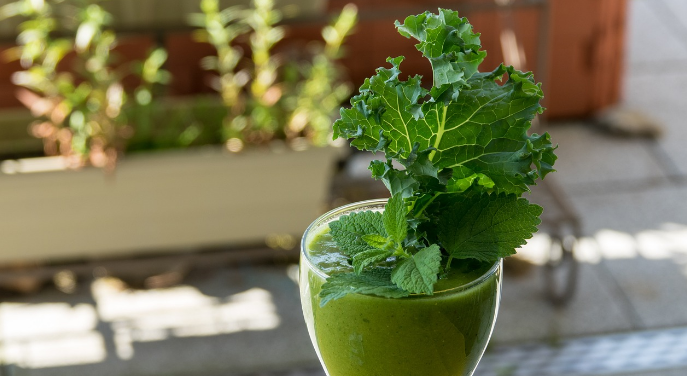why you need to add kale to your smoothie diet?
Introduction
Kale has become a bit of a health food buzzword in recent years, and it's easy to see why. It's loaded with vitamins and minerals, contains more calcium than milk, and is an excellent source of antioxidants that can help prevent disease. But don't just take my word for it—here are seven reasons why you should add kale to your smoothie diet:
Kale is a nutrition powerhouse.
Kale is a nutrition powerhouse. It's high in vitamins A and C, calcium, iron and potassium. It's also a good source of fiber and protein. Kale is low in calories and fat—one cup has just 33 calories!
It's good for your bones.
Kale is rich in calcium, magnesium and vitamin K. These minerals play a key role in maintaining healthy bones. Calcium is necessary for bone health as it helps with muscle contraction and nerve transmission as well as blood clotting. Magnesium helps with bone growth, while vitamin K helps with bone formation.
You can also get plenty of these nutrients from other foods like yogurt or milk—but if you're already drinking them regularly (and your doctor has given the green light), adding kale to your smoothie diet could be an easy way to up your intake without going overboard on calories or fat content!
It can help prevent heart disease.
You may have heard that kale is a good source of omega-3 fatty acids, which help reduce inflammation. Inflammation can be a contributor to heart disease, so eating foods like kale that are high in omega-3s can help you reduce your risk for this condition.
It may prevent certain cancers.
Kale is a green veggie that is great for your health. Kale has many nutrients and vitamins that can help prevent certain diseases, such as cancer and cataracts. Kale is rich in lutein and zeaxanthin, two carotenoids that are thought to help prevent cancer. Lutein helps protect against macular degeneration, a condition that affects the eyesight as people age. It’s also known to lower cholesterol levels in the blood and decrease one's risk of heart disease. Zeaxanthin has been shown to play an important role in protecting against age-related macular degeneration (AMD) by increasing beta-carotene levels in the retina (the light-sensitive part of our eye).
It can help reduce asthma symptoms and eye issues in kids.
Kale is rich in lutein and zeaxanthin, two carotenoids that play a critical role in protecting the eyes from damage. Carotenoids also have been linked to a reduced risk of cataracts and age-related macular degeneration (AMD).
Asthma symptoms can be managed with the help of kale, too. Lutein is thought to help improve lung function by reducing inflammation and constriction of airways. Kale contains high amounts of magnesium, which helps relax muscles throughout the body, including those in the lungs. As such, it may prove beneficial for those suffering from asthma or emphysema as well as other respiratory conditions involving wheezing, shortness of breath and coughing spells.
Kale is one of the most high-pesticide contaminated vegetables.
Before you start putting kale in your smoothie, it’s important to know that kale is one of the most pesticide contaminated vegetables.
Pesticides are bad for you, and they’re also bad for the environment. In fact, they’re so bad that they can cause hormone disruption and contribute to both breast cancer and prostate cancer.
By washing your kale well before using it, you can reduce the amount of pesticides in your smoothie diet by up to 90%.
It's easy to cook kale if you don't want to drink it in a smoothie.
Kale is a leafy green vegetable packed with vitamins and minerals, but it can be a bit tough to chew. It's best to cook kale before eating it raw in salads or smoothies. Kale can also be used in soups, stews, stir-fries, and other dishes.
If you want to use kale in your smoothie diet but don't want to add it raw because of its texture, here are some quick cooking ideas:
-
Boil kale for 30 seconds
-
Add it to soup or other liquid-based meals (like stew)
You should add kale to your smoothie diet because it's healthy and tastes good!
Kale is a superfood, meaning that it's packed with antioxidants and other nutrients. Kale is also low in calories and high in fiber, as well as having anti-inflammatory properties. Because of these benefits, kale has become one of the most popular vegetables among smoothie enthusiasts. Kale tastes good!
While there are many ways to add kale to your smoothie diet (and we'll get into those soon), one thing we can all agree on is that adding fresh green leaves like baby spinach or kale makes any smoothie taste better. This can be difficult for some people who don't like their drinks too bitter or earthy tasting. But if you're looking for a way to improve the taste of your green smoothies without adding additional sweeteners, try adding some fresh herbs like mint leaves or basil leaves instead!
Conclusion
Kale is a versatile vegetable that can be used in many different ways. It's an excellent addition to smoothies, but you can also use kale leaves as a garnish for soups or salads. Try adding it to your next meal at least once this week!
13 Kale Weight Loss Smoothies: A Fun, Healthy Way to Drop Pounds


